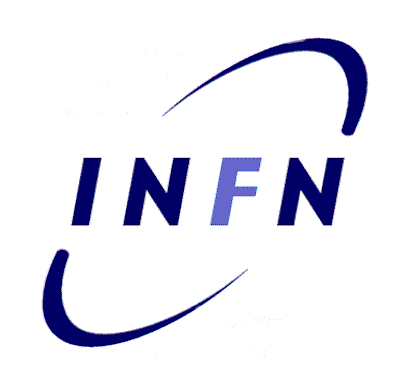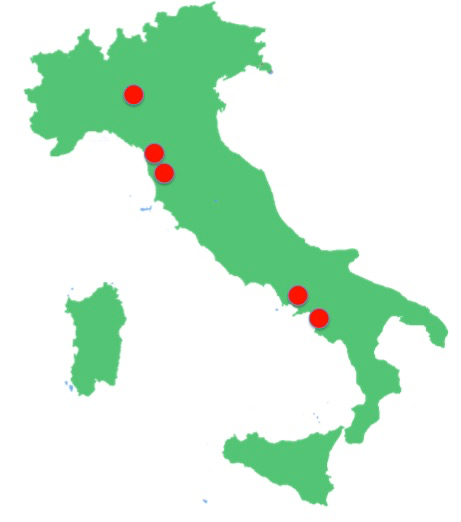Scientific activities of the various Research Units
Firenze
The research activities have been focused on the connections between topological field theory, Poisson geometry and noncommutative geometry. The present research treats the problem of the quantization of Poisson-Lie groups and their homogeneous spaces using the symplectic groupoids integrating them, the Poisson sigma model and the study of bihamiltonian systems on symmetric spaces. Other research activities are connected with the study of the Dirac operator and the spectral properties of fermions quark system. We are also interested in problema of transport in optical lattices in bidimensional structures, such as honeycomb shaped lattices.
Napoli
The Group in Napoli is mainly characterized by the study of noncommutative spaces, deformed symmetries and field theory. We expect to reach results in the following areas:
- Properties of noncommutative spaces (including fuzzy spaces), their symmetries and geometrical, metric and differential properties.
- Quantum field theories on noncommutative spaces and their twisted symmetries. Not only the Moyal deformations of the product, but also other deformations obtained by some Drinfel'd twist are considered.
- Applications of noncommutative geometry to the standard model of particle physics, the spectral action especially in view of the data coming form LHC, as well as its cosmological consequences. Role of the anomalies for the spectral action.
- Kac-Moody and Borcherds algebras and superalgebras. - Use of quaternions in the formulation of ordinary quantum field theory on Minkowski space.
Pavia
The node is active in the formal aspects of field theory and geometry: the geometric (Ricci) flows, renormalization group and QFT landscaping and several aspects and applications of Topological Quantum Field Theory.
- The structure of the moduli space of polyhedral surfaces and its connection with 2D quantum gravity and matrix models, quantum observables in 3D, TQFT of the BF-type and associated Turaev-Viro SU(2)q state sum models and algorithmic issues;
- The physics if the onset of topologically-protected phases and quasi-particles excitations, of the new forms of condensed matter (graphene).
Pisa
The Pisa node focuses on the following domains of research:
- perturbative quantum field theory and renormalization of general gauge theories to all orders with the Batalin-Vilkovisky formalism;
- nonrenormalizable theories, nonlocal quantum gravity, nonlinearly realized gauge models, effective field theories;
- gauge symmetries, global symmetries, anomalies and symmetry violations, renormalization group;
- perturbative and nonperturbative gauge and chiral symmetry breaking;
- formulation of quantum mechanics on manifolds, existence of a scattering operator in QED;
- von Neumann theorem and representations of the Weyl algebra when the configuration space is not R^n;
- quadrupole gravitational radiation and gravitomagnetic phenomena.
Salerno
The activity of Salerno node is focused on the study of neutrino mixing and oscillations in the framework of a Quantum Field Theory approach developed in the past years by the same group. This research includes issues such as the connection of field mixing with Connes non-commutative spectral geometry in the Standard Model, the investigation of entanglement in neutrino mixing and oscillations, and the gauge structure of the theory. Other research topics include the study of dissipative systems, non-equilibrium statistical mechanics and interdisciplinary applications to brain modeling and electromagnetic properties of DNA.


